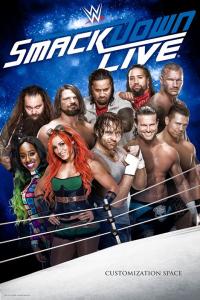Torrent details for "The Real History of Dracula" Log in to bookmark
Controls:
Language:
 English
EnglishTotal Size:
3.73 GB
Info Hash:
59e25d5a2f2496b53b47b718c888ec93d6975963
Added By:
Added:
29-05-2023 17:59
Views:
487
Health:

Seeds:
4
Leechers:
0
Completed:
174
Thanks for rating :
TheIndianPirate (5),
(5),
TheIndianPirate

Description
There are few fictional characters who have entrenched themselves so thoroughly in the popular imagination as Count Dracula. Although legends of vampires and other blood-thirsty creatures existed long before him, Dracula has become the ultimate apotheosis of the vampiric monster. He has spawned an entire industry of books, films, television shows, and other forms of media devoted to the vampire.
Dracula, as portrayed in the eponymous novel by Bram Stoker published in 1897, is an aristocratic monster—both seductive and terrifying in equal measure. Though the novel Dracula was only a modest success when it was first published, it has proven to be one of British literature’s most enduring classics. It continues to tap into our deepest anxieties and forbidden desires, just as it did for its original Victorian audience. And while Stoker’s novel is perhaps the most famous vampire story, legends of the creature have existed in various forms for centuries. So, why have we been telling stories about vampires for hundreds of years … and why do these stories still matter today?
In the 10 episodes of The Real History of Dracula, folklorists Dr. Sara Cleto and Dr. Brittany Warman, of The Carterhaugh School of Folklore and the Fantastic, will shine a light into the dark recesses of our cultural obsession with vampires. Using folklore, literature, history, television, film, and more, Sara and Brittany will show you how—and why—vampires are a potent metaphor for what matters most about the human condition.
Vampiric Beginnings and Influences
To understand the power of the vampire over our cultural imagination, it is first necessary to explore the history of the creature and why the vampire endures. Tales of vampires or vampire-like creatures have existed for hundreds, even thousands, of years. Like any monster tale from folklore traditions, the tales reflect the anxieties and fears of the people who tell them.
The vampire in European folklore has often stood as a metaphor for disease or contagion—after all, vampirism is a communicable form of monstrousness. But the vampire has also represented apprehensions around sexuality and promiscuity, fear of outsiders and strangers, the terror of the unexplained, the inevitability of aging and death, and other anxieties. In his creation of Dracula, Stoker likely incorporated many sources that contributed elements to the mythos he developed for the vampire. Some of these include:
Vlad the Impaler. Vlad III of Wallachia is often cited as one of the primary influences for the character Dracula, but he likely had very little direct impact beyond his reputation for cruelty and his family nickname “Dracula.”
The Demon Lilith. In Hebrew and Mesopotamian tradition, Lilith is the first wife of Adam, condemned to walk the Earth as a demon. Her hypersexuality and aggression may have deeply influenced the female vampires in Stoker’s work.
Irish Folklore/Fairylore. Stoker’s Irish heritage meant he had a great deal of exposure to Irish folklore, and specifically to tales of fairies and supernatural creatures, which likely found a way into his work and shaped his conception of the vampire.
As part of the Gothic literary tradition, Dracula combines these older sources with contemporary ideas of the late-Victorian period. As you will see, not only does the vampire story tackle fear and dread, but it also touches on hidden desires and social taboos that give the vampires of the 19th century, and beyond, their seductive power. Also, the vampire often finds its way across genre barriers, meaning that the vampire and creatures like it can be found in many places you may not expect, from fairy tales to teen television melodramas.
Very Human Monsters
Early vampires in the folklore traditions of Eastern Europe were rather inhuman in their presentation—their humanity was subsumed by their monstrous, bloodsucking nature. However, their human roots are, nonetheless, important to their metaphorical and literary roles. Vampires are monsters that look human because they began their lives as ordinary people before being “infected” or “cursed” with vampirism; their proximity to their original humanity creates a troubling image of evil in human form.
This humanity-as-mask makes the vampire a popular monster in modern storytelling, allowing creators and audiences to explore the human condition through a unique lens in the many novels, plays, and other media that followed in the wake of Stoker’s work. While the novel was the popular form of mass entertainment in Stoker’s time, perhaps the greatest vehicle for the vampire’s popularity is film. From Nosferatu and the classic Dracula portrayed by Bela Lugosi to cult classic B-movies and the phenomenally successful Twilight franchise, the vampire has had a starring role in Hollywood for over a century.
Stoker’s Dracula isn’t particularly sexy or romantic, at least compared to many modern incarnations of the vampire. So why did the portrayals of the past few decades become so much more enamored with romance, attraction, and sexuality? As Sara and Brittany discuss the film career of the vampire, the portrayals illuminate the ways our desires and anxieties are inextricably connected—and how the vampire is such an ideal vehicle for exploring this complex tangle of human emotions.
The Immortality of the Vampire
The vampire existed long before Bram Stoker introduced readers to the Count from Transylvania. Having been a staple of popular culture for a century since, Dracula is more than just another rendition of a common folkloric monster. He is arguably one of the most influential fictional characters of the last century. The late 19th century was a time of immense upheaval in nearly every aspect of society in Western Europe and Dracula presented a microcosm of political, scientific, social, cultural, and economic anxieties, wrapped up in a tale of supernatural suspense.
Times may have changed since Dracula became the definitive vampire of the modern era, but many of our fears have not. So much of what Dracula represented to his fin de siècle audience remains part of our consciousness—our fears and desires may shift to reflect our time and place, yet the human condition remains much the same. Vampires since Dracula have taken on different aspects to reflect their times and the lore changes to suit new sensibilities, demonstrating the vampire’s cunning ability to thrive in multiple cultures, genres, and mediums. As Sara and Brittany make clear throughout this course, folklore is not just a thing of the past, but rather a living, growing, continual presence in our lives. As a part of this living tradition, the vampire has become truly immortal.
Vampires continue to be part of our cultural conversation, and there’s no sign that that will end any time soon. They are tools for understanding the world and, therefore, are more significant than they might first appear. They teach us about our anxieties and our desires—particularly the ones we’re afraid to speak out loud.
Released 4/2023















































